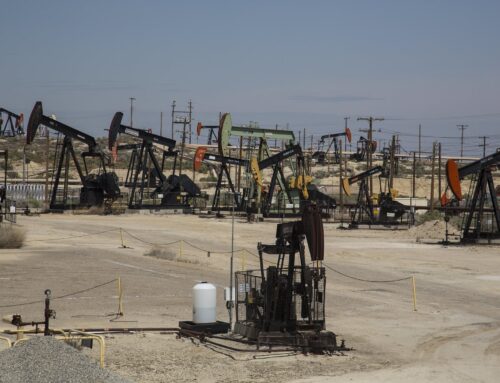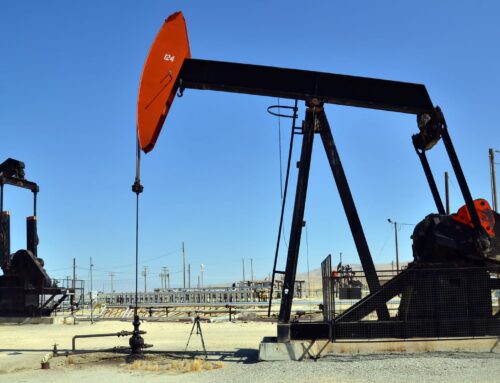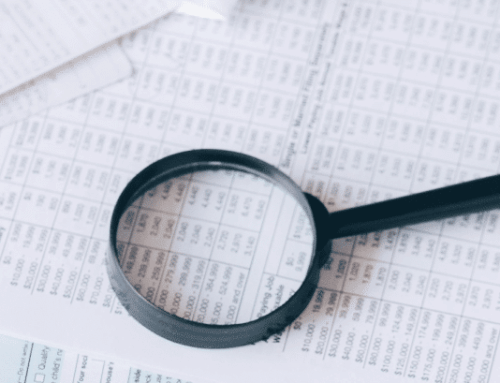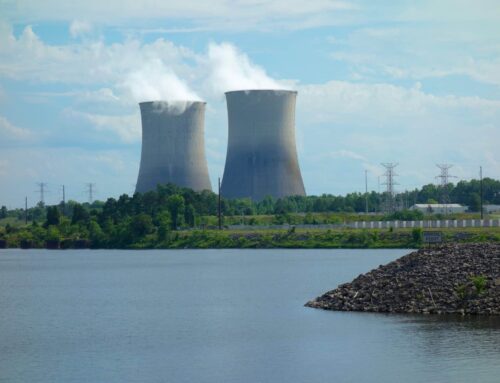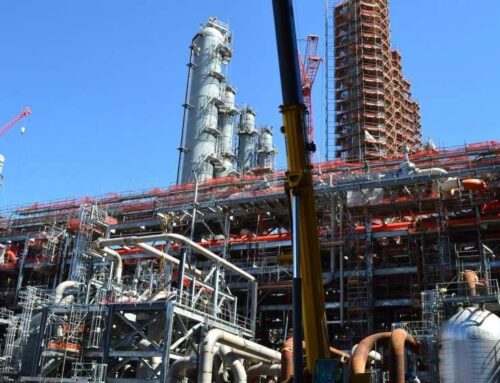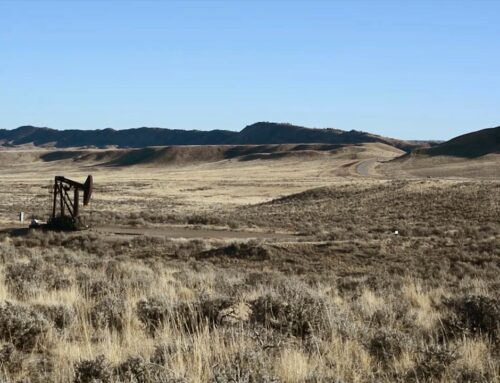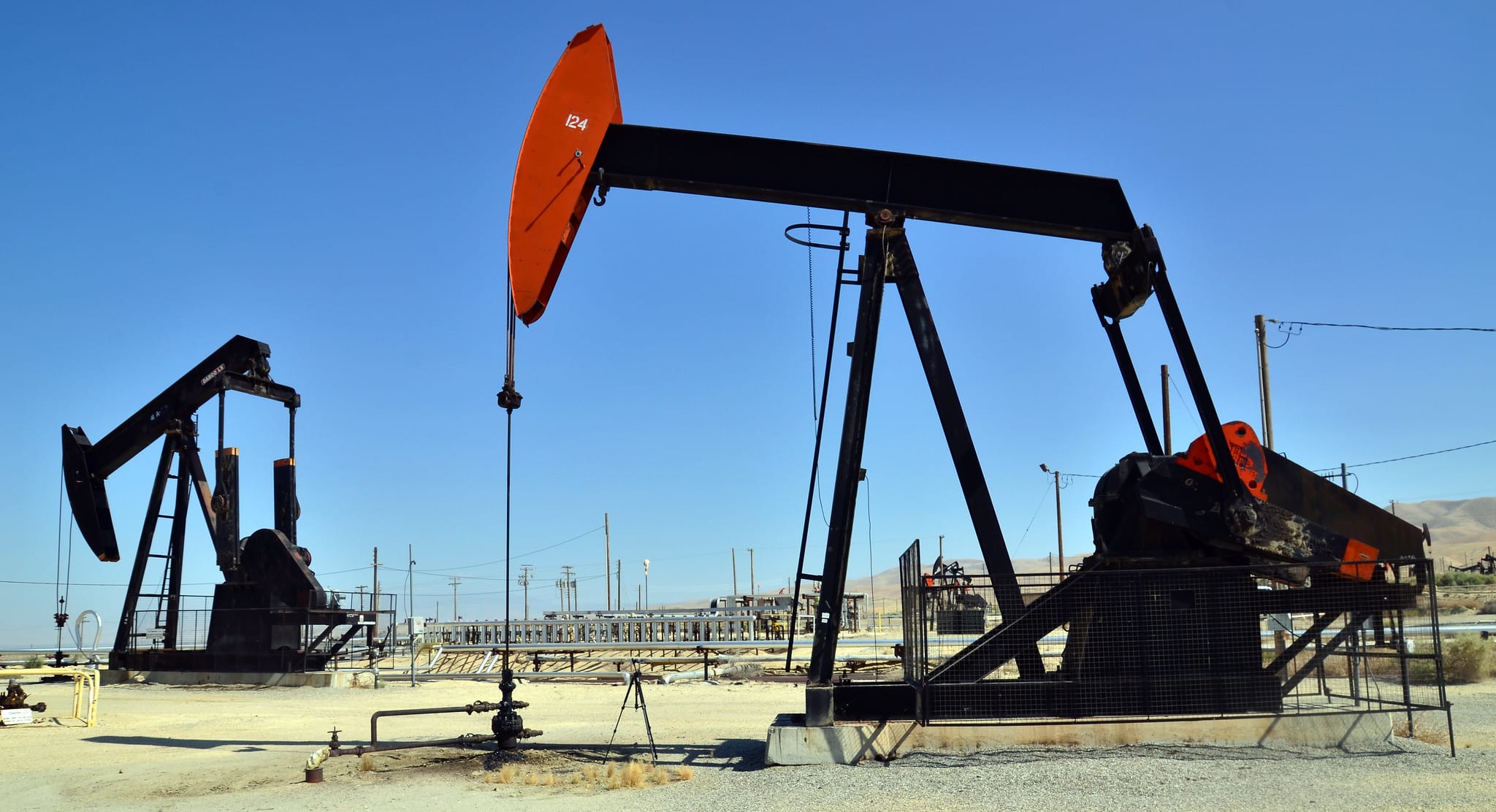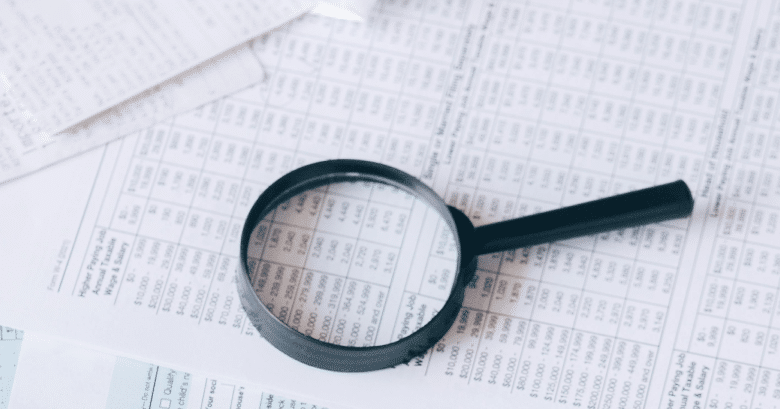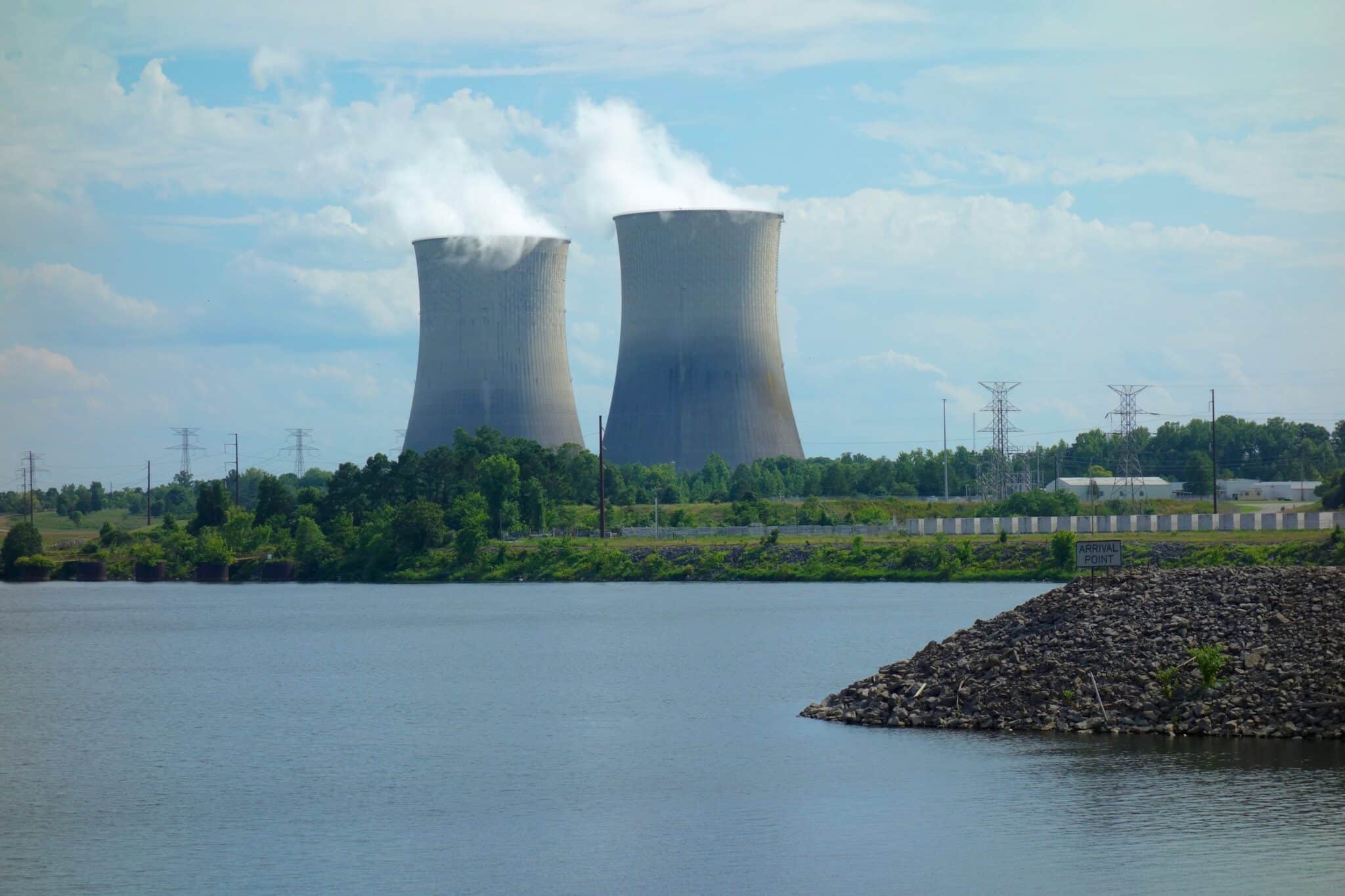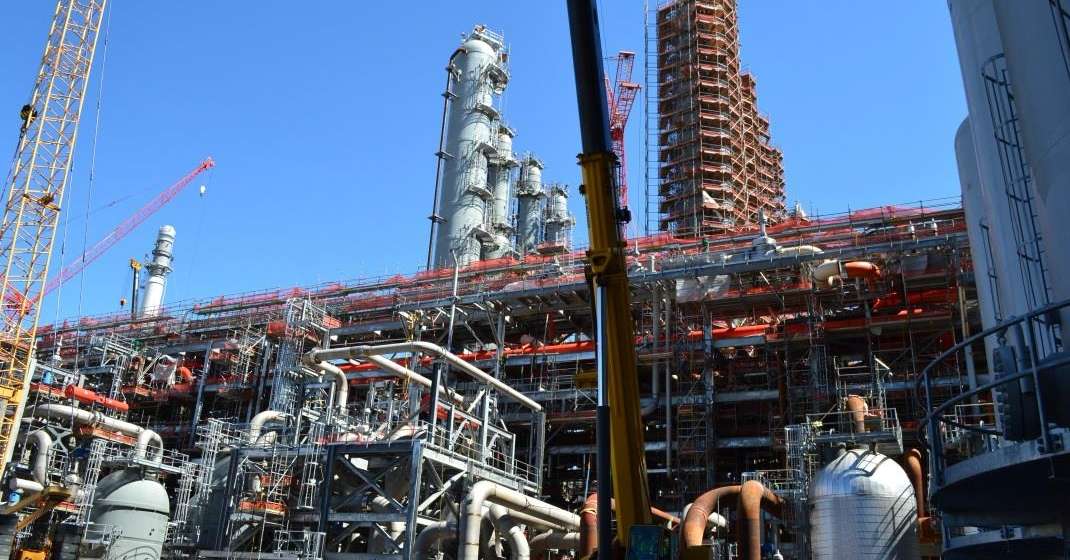On July 4th President Trump signed the FY2025 budget reconciliation bill, also known as the One Big Beautiful Bill Act (OBBBA) into law. The final bill was amended and passed by the Senate on July 1st and passed by the House of Representatives on July 3rd.
Though there were stark differences between the initial draft text proposed in the House and Senate respectively, the House ended up accepting changes to their previously-passed energy tax provisions. In the end, the final OBBBA stayed the course killing or slashing nearly every energy tax credit created or expanded by the Inflation Reduction Act (IRA)—electric vehicle, energy efficiency, wind, solar, and manufacturing—by moving up expiration dates and phaseout schedules. Others tax credits for the energy sector, such as biofuels, carbon capture, oil and gas, and nuclear, were consistent winners, even securing a few favorable last-minute amendments.
Some last-minute changes proposed by the Senate—including a new punitive excise tax on future wind and solar facilities—were dropped from the final bill at the request of several moderate Senators concerned with its implications on renewable energy projects. However, other changes made by the Senate Budget Committee—such as delaying the termination of 45V hydrogen tax credit by 2 years, and the extension and expansion of the 40A biofuels tax credit—were adopted in the final bill.
Summary of Energy Tax Provisions in the OBBBA
Expansion and Extension of the 45Z Clean Fuel Production Credit (and the 40A Small Agri-biodiesel Tax Credit)
What it is: The Section 45Z Clean Fuel Production Credit is designed to subsidize production of transportation fuels with low or no greenhouse gas (GHG) emissions. This credit came into effect at the beginning of 2025 and is intended to replace a suite of recently expired biofuel tax credits (Section 40, 40A, 40B, 6426, and 6427).
What OBBBA Changes: The final bill extends the expiration date of Section 45Z from the end of 2027 to the end of 2029. The bill also lowers the lifecycle GHG assessment standards, which will significantly broaden eligibility for the credit and effectively allow first-generation, food-based biofuels like corn ethanol and biodiesel to qualify. The bill disallows credits that use foreign feedstock grown outside of the U.S., Canada or Mexico for fuels produced after 2025.
OBBBA also establishes parity between Sustainable Aviation Fuel (SAF) and other transportation fuels under 45Z. SAF was previously eligible for a maximum credit of $0.35 per gallon ($1.75 if wage and apprenticeship requirements are met), where other non-SAF fuels were only eligible for a maximum credit of $0.20 per gallon ($1.00 if wage and apprenticeship requirements are met). Under OBBBA, all fuels are eligible for the same $0.20 per gallon ($1.00 if wage and apprenticeship requirements are met) maximum credit. Additionally, the bill eliminates potential double-dipping of 45Z and the SAF excise tax credit under Section 6426(k).
Sec. 70521 of the bill, named Extension and Modification of Clean Fuel Production Credit, also tacked on a provision that extends and expands the credit for small agri-biodiesel producers (Section 40A(b)(4)), which had previously expired at the end of 2024. OBBBA even increases the credit amount from $0.10 per gallon to $0.20 per gallon for fuels sold after June 30, 2025. This small agri-biodiesel credit can be transferred to an unrelated third party and stacked with 45Z. Like 45Z, the bill restricts eligibility to feedstock grown in the U.S., Canada, or Mexico for fuels produced after 2025.
How Much It Will Cost: According to the Joint Committee on Taxation (JCT), the extension and expansion of 45Z will cost taxpayers $25.7 billion from FY2025 to FY2034.
Expansion of the 45Q Carbon Oxide Sequestration Tax Credit
What it is: Structured like a carbon production tax credit, the Section 45Q Carbon Oxide Sequestration Tax Credit provides a credit for every ton of carbon dioxide (CO₂) captured from power plants or other industrial sources and permanently stored underground in geological formations. The IRA expanded and extended the credit by lowering the minimum capture threshold, increasing the credit amount, and extending eligibility to facilities that begin construction before the end of 2032. The Treasury Department previously estimated that 45Q will cost taxpayers $36.2 billion over FY2024-FY2033.
Under current law, facilities that are placed in service after 2022 can claim $17 ($36 in the case of a direct air capture, or DAC, facility) for every ton of carbon captured and then stored in geological sequestration, and $12/ton (or $26/ton in the case of a DAC facility) if carbon is used for enhanced oil recovery (EOR) or other uses. EOR is a technique that boosts production by injecting carbon into depleted wells to eke out more oil and gas. The credit amount is inflation-adjusted and can be multiplied by 5 if certain prevailing wage and apprenticeship requirements are met.
What OBBBA Changes: The OBBBA increases the credit amount for EOR and other uses to $17/ton ($36/ton in the case of a DAC facility) for facilities placed in service after the bill is enacted. The increased rates will start in 2025 and be adjusted for inflation after 2026.
How Much It Will Cost: JCT estimates that this expansion of 45Q (combined with the effect of the foreign entity of concern restrictions) will cost taxpayers an additional $14.2 billion over the next decade.
No Changes to Section 45U Zero-Emission Nuclear Power Production Credit
What it is: The Section 45U Zero-Emission Nuclear Power Production Credit provides up to $15 per megawatt-hour (MWh) of electricity produced and sold by qualifying nuclear power facilities, with the credit reduced for plants that earn more income from electricity sales. The credit applies to electricity produced after 2023 and is currently set to expire at the end of 2032. The Joint Committee on Taxation (JCT) previously estimated 45U will cost taxpayers $30 billion from FY2022 to FY2031.
What OBBBA Changes: The final bill does not include any changes to the Section 45U credit amount or expiration date but does impose some foreign entity of concern (FEOC) restrictions that also applies to another credit (see FEOC explanation below). Both Senate Finance and Senate Budget drafts of the bill would have disallowed credits for facilities using fuel produced in North Korea, China, Russia, and Iran after 2027 (except for contracts in effect before 2023), but this restriction was dropped in the final bill.
How Much It Will Cost: JCT estimated that these restrictions will have negligible revenue effect and will not reduce the deficit.
No Changes to Section 45 Renewable Energy Production Tax Credits
What it is: The Section 45 Renewable Energy Production Tax Credit (PTC) provides a per-kilowatt-hour (kWh) tax credit for the production of electricity from certain qualified renewable sources like wind, biomass, geothermal, solar, and more. The credit is available for a period of 10 years beginning on the date a qualified facility is placed in service.
What OBBBA Changes: The final bill does not include any provisions related to the Section 45 Tax Credit, which generally expired at the end of 2024. Under the IRA, lawmakers intended to replace Section 45 with the technology-neutral clean electricity production tax credits—Section 45Y, which will be heavily slashed and modified by OBBBA (see changes to 45Y below)
How Much It Will Cost: N/A
Elimination of Certain Energy Properties under Section 48 Renewable Energy Production and Investment Tax Credits
What it is: The Section 48 Investment Tax Credit (ITC) for energy-related projects provides a 6% tax credit based on qualified investment in certain renewable projects like wind, solar, geothermal, and more. The credit generally expired at the end of 2024 for most types of energy properties, except for geothermal heat pumps which have a beginning-of-construction deadline of January 1, 2035, and certain solar and geothermal properties which have no deadlines at all.
What OBBBA Changes: For projects still able to secure the tax credit, OBBBA reduces the credit amount from 2% (10% if prevailing wage and apprenticeship requirements are met) to 0% (no bonuses allowed), effectively eliminating the permanent 10% investment tax credit for remaining qualified solar and geothermal properties that begin construction after 2024. This provision was added by the Senate Budget Committee.
How Much It Will Save: Included in the cost of changes to the 48E energy tax credit—$165.7 billion in savings—as both are amended in Sec. 70513 of the final bill.
Special Tax Treatment of Carbon Capture, Hydrogen Storage, Advanced Nuclear, Hydropower, and Geothermal Energy-Related Income
What it is: Under current law, Publicly Traded Partnerships (PTPs) whose interests are traded on public exchanges are generally taxed as corporations. However, if at least 90 percent of a PTP's gross income comes from qualifying sources—such as rents, gains from the sale of real properties, or income from the exploration, production, processing, refining, transportation, or marketing of minerals or natural resources (including industrial source CO₂ and biofuels)—it can be treated as a partnership instead. This allows the entity to avoid corporate-level taxation by passing through its income to partners.
What OBBBA Changes: The final bill allows the following new income sources to be considered "qualifying income" for PTPs:
- transportation and storage of hydrogen;
- generation of electricity or capture of carbon dioxide at certain carbon capture and storage (CCS) facilities;
- generation of electricity from hydropower, advanced nuclear, and geothermal energy;
- operation of property to produce, distribute or use energy produced from geothermal deposits.
How Much It Will Cost: This expansion of PTP qualifying income will cost taxpayers over $3.2 billion from FY2025 to FY2034.
Allowing Intangible Drilling and Development Costs Deductions for the Purpose of Computing Corporate Alternative Minimum Tax
What it is: Under current law, the corporate alternative minimum tax (CAMT) imposes a 15% minimum tax on the adjusted financial statement income (AFSI) of large corporations with an average annual financial statement income exceeding $1 billion, effective in 2023. Corporations pay the larger of the minimum tax or the regular corporate tax, which is set at 21% and includes any additional tax from the base erosion and anti-abuse tax (BEAT). The AFSI allows for tax depreciation, net of operating losses, and other adjustments that reduce the base of the CAMT.
What OBBBA Changes: The final bill allows operators of oil and gas and geothermal wells to deduct intangible drilling costs (IDCs) from AFSI when calculating CAMT. Expensing of IDCs is a long-standing oil and gas subsidy established in 1913 that allows all of the non-salvageable costs for drilling an oil or gas well (e.g. wages, fuel, and drilling sit preparation) to be deducted the year these costs are incurred, while other industries must expense costs slowly over the life of an asset.
How Much It Will Cost: This provision effectively allows oil and gas drillers to avoid the CAMT altogether. Although the JCT estimates that this provision will cost $427 million over the next decade, a prior JCT analysis of the H.R. 662 Promoting Domestic Energy Production Act—a bill that includes the same provision—found that allowing IDC to be deducted for purpose of determining CAMT will cost taxpayers $1.1 billion over a decade.
Early Expiration and Accelerated Phaseout of Section 45Y Clean Electricity Production Credit
What it is: The Section 45Y Clean Electricity Production Credit offers a technology-neutral 0.3 cent per-kilowatt-hour (kWh) tax credit for the production of electricity from qualified sources with a greenhouse gas (GHG) emissions rate of no greater than zero. The credit is available for ten years for qualified facilities.
What OBBBA Changes: To be eligible for the credit, wind and solar facilities that begin construction more than 12 months after the bill's enactment must be placed in service before 2028. This early sunset is different from the phaseout period included in House-passed bill and earlier Senate Finance draft.
The tax credit was previously set to begin phasing out for all facilities either after 2032 or the year after U.S. annual GHG emissions from electricity production are equal of less than 25% of 2022 emissions. The final OBBBA eliminates the "later of" phaseout under current law to start phaseout after 2032 (100% in 2033, 75% in 2034, 50% in 2035, and 0% in 2036) for other technologies/facilities.
Other changes to the tax credit include:
- Allows the use of "existing studies" to determine lifecycle GHG emissions rates
- Restores cost/unavailability exceptions to the domestic content requirement for direct-pay entities (e.g. state, local, and tribal governments), which was previously eliminated by the Senate Finance proposal and will make most direct pay entities unable to claim the credit
- No credit allowed for solar water heaters and small wind properties leased/rented by a third party, but restores credit for residential solar leases, previously disallowed in the Senate Finance draft
- Adds advanced nuclear energy community to the definition of energy communities, which can receive a 10% credit bonus. An advanced nuclear energy community is a metropolitan statistical area which has (or, at any time during the period beginning after December 31, 2009, had) 0.17% or greater direct employment related to advanced nuclear power. The final bill added language to clarify that the definition of an advanced nuclear facility (as defined under 45J(d)) shall be determined without regard to whether the reactor design was approved after December 31, 1993. This practically allows all existing nuclear facilities to qualify.
How Much It Will Save: JCT estimates that the changes to 45Y will save taxpayers an additional $24.9 billion over the next decade.
Early Expiration and Accelerated Phaseout of Section 48E Clean Electricity Investment Credit
What it is: The Section 48E Clean Electricity Investment Credit provides a 6 percent tax credit based on qualified investment in certain qualified electricity generation or energy storage projects with a net greenhouse gas (GHG) emissions rate of no greater than zero.
What OBBBA Changes: To be eligible for the credit, wind and solar facilities that begin construction more than 12 months after the bill's enactment must be placed in service before 2028. This early sunset is different from the phaseout period included in House-passed bill and earlier Senate Finance draft.
The tax credit was previously set to begin phasing out for all facilities either after 2032 or the year after U.S. annual GHG emissions from electricity production are equal of less than 25% of 2022 emissions. The final OBBBA eliminates the "later of" phaseout under current law to start phaseout after 2032 (100% in 2033, 75% in 2034, 50% in 2035, and 0% in 2036) for other technologies/facilities.
Other changes to the tax credit include:
- Increases domestic content bonus requirement to be on par with 45Y:
-
- Facilities that begin construction before 6/16/2025: 40%, or 20% for offshore wind
-
- Facilities that begin construction before 12/31/2025: 45%, or 27.5% for offshore wind
-
- Facilities that begin construction before 12/31/2026: 50%, or 35% for offshore wind
-
- Facilities that begin construction after 12/31/2026: 55%
- Allows the use of "existing studies" to determine lifecycle GHG emissions rates
- No credit allowed for solar water heaters and small wind properties leased/rented by a third party, but restores credit for residential solar leases, previously disallowed in the Senate Finance draft
- Eliminate GHG emissions requirement for qualified fuel cell properties and increase credit amount for such fuel cell properties to 30% (but no credit bonuses can apply, compared to the 6% base amount for other technologies, with 5x increase if wage & apprenticeship requirements are met), effective for properties that begin construction after 12/31/2025.
How Much It Will Save: JCT estimates that the changes to 48E (combined with the effect of 48) will save taxpayers an additional $165.7 billion over the next decade.
Accelerated Phaseout of Section 45X Advanced Manufacturing Production Credit
What it is: The Section 45X Advanced Manufacturing Production Credit is an incentive created to bolster domestic clean energy manufacturing by incentivizing the production of key renewable energy components, such as solar and wind energy parts, inverters, battery components, and critical minerals. The credit amount varies based on the component and material.
What OBBBA Changes: OBBBA terminates the credit for wind components produced and sold after 2027. The credit was previously set to phase out for all eligible components, including wind components, expire after 2032 (100% in 2029, 75% in 2030, 50% in 2031, 25% in 2032, 0% thereafter). OBBBA keeps the same phaseout for all other components.
OBBBA creates a new phaseout period for critical minerals (except for metallurgical coal, which terminates after 2029): 100% in 2030, 75% in 2031, 50% in 2032, 25% in 2033, 0% thereafter. The credit was previously permanent for critical minerals. OBBBA also adds metallurgical coal as an eligible critical mineral, eligible for a credit of 2.5% of production costs (10% for all other critical minerals).
Additionally, the final bill maintains eligibility for component within an integrated structure, but no less than 65% of total direct material costs of such integrated (or "secondary") components must come from primary components mined, produced, or manufactured in the U.S., effective for components sold after 12/31/2026.
How Much It Will Save: JCT estimates that the changes to 45X will save taxpayers an additional $14.9 billion over the next decade.
Termination of the Section 48C Advanced Energy Project Credit
What it is: Section 48C Qualifying Advanced Energy Project Credit provides a credit of up to 30% for a variety of different types of energy projects, including Clean Energy Manufacturing and Recycling Projects, Industrial Decarbonization Projects, and Critical Materials Projects. It is capped at a total of $10 billion in allocation under the Inflation Reduction Act. The JCT previously estimated that Section 48C will cost $6.3 billion from FY2022 to FY2031.
What OBBBA Changes: OBBBA disallows the reissuing of funds for any revoked project certification, effective on bill enactment.
How Much It Will Save: JCT estimates that the changes to 48C will have negligible revenue effects.
Termination of Section 30D Clean Vehicle Credit
What it is: The Section 30D Clean Vehicle Credit offers a maximum of $7,500 for every new clean vehicle placed in service. The credit amount is subject to certain domestic content and foreign entity of concern requirements, as well as the vehicle's retail price and the buyer's income.
What OBBBA Changes: This credit now expires for vehicles purchased after 9/30/2025. The credit was previously set to expire at the end of 2032.
How Much It Will Save: JCT estimates that the changes to 30D will save taxpayers an additional $77.8 billion over the next decade.
Termination of Section 25E Used Clean Vehicle Credit
What it is: The Section 25E Used Clean Vehicle Credit offers a $4,000 credit (or 30% of sale price, whichever is less) for a previously owned vehicle purchased by a qualified buyer. The credit is subject to vehicle weight, sale price, and buyer income caps.
What OBBBA Changes: This credit now expires for vehicles purchased 9/30/2025. The credit was previously set to expire at the end of 2032.
How Much It Will Save: JCT estimates that the changes to 25E will save taxpayers an additional $7.4 billion over the next decade.
Termination of Section 45W Qualified Commercial Clean Vehicles Credit
What it is: The Section 45W Qualified Commercial Clean Vehicles Credit offers every qualified commercial clean vehicle a credit amount that is the lesser of 15% of its cost basis (50% if the vehicle is not powered by gas or diesel engine) or the cost by which it exceeds a comparable vehicle that runs solely on gas or diesel engine, subject to a $40,000 cap for vehicles over 14,000 pounds.
What OBBBA Changes: This credit now expires for vehicles purchased 9/30/2025. The credit was previously set to expire at the end of 2032.
How Much It Will Save: JCT estimates that the changes to 45W will save taxpayers an additional $104.5 billion over the next decade.
Termination of Section 30C Alternative Fuel Refueling Property Credit
What it is: The Section 30C Alternative Fuel Refueling Property Credit offers a credit up to 30% of the cost of any qualified, non-depreciable alternative fuel refueling property placed in service and 5% for depreciable property.
What OBBBA Changed: The credit now expires for property placed in service after 6/30/2026. The credit was previously set to expire at the end of 2032.
How Much It Will Save: JCT estimates that the changes to 30C will save taxpayers an additional $2 billion over the next decade.
Termination of Section 25C Energy Efficient Home Improvement Credit
What it is: The Section 25C Energy Efficient Home Improvement Credit offers a 30% credit for energy efficient home improvements like exterior doors and windows, energy conserving components like insulation materials, heat pumps, boilers and biomass stoves, etc., up to a $3200 cap.
What OBBBA Changes: The credit now expires for property placed in service after 12/31/2025. The credit was previously set to expire at the end of 2032.
How Much It Will Save: JCT estimates that the changes to 25C will save taxpayers an additional $21.2 billion over the next decade.
Termination of Section 25D Residential Clean Energy Credit
What it is: The Section 25D Residential Clean Energy Credit offers a 30% credit for residential clean energy property placed in service, such as solar energy, solar water heater, fuel cell, small wind, geothermal heat pump, battery storage, etc.
What OBBBA Changes: The credit now expires for expenditures made after 12/31/2025. The credit was previously set to expire at the end of 2034.
How Much It Will Save: JCT estimates that the changes to 25D will save taxpayers an additional $77.4 billion over the next decade.
Termination of Section 179D Energy Efficient Commercial Buildings Deduction
What it is: The Section 179D Energy Efficient Commercial Buildings Deduction allows owners and lessees of energy efficient commercial building to deduct some of their business expenditures for the purpose of calculation federal income taxes.
What OBBBA Changes: The deduction now expires for property that begins construction after 6/30/2026. The credit was previously permanent with no expiration date.
How Much It Will Save: JCT estimates that the changes to 179D will save taxpayers an additional $134 million over the next decade.
Termination of Section 45L New Energy Efficient Home Credit
What it is: The Section 45L New Energy Efficient Home Credit offers a $2,500 credit for new homes that meet certain energy efficiency standards, but not certified zero-energy ready, and a $5,000 credit for new homes that are certified as zero-energy ready home
What OBBBA Changes: The credit now expires for homes acquired after 6/30/2026. The credit was previously set to expire at the end of 2032.
How Much It Will Save: JCT estimates that the changes to 45L will save taxpayers an additional $5.4 billion over the next decade.
Early Expiration of the Section 45V Clean Hydrogen Production Credit
What it is: The Section 45V Clean Hydrogen Production Credit offers a four-tiered tax credit of up to $3 per kilogram for the production of hydrogen based on the greenhouse gas emissions intensity. The credit is available for 10 years for qualifying facilities.
What OBBBA Changes: The credit now expires for facilities constructed after 2027, two years later than previous proposals. The credit was previously set to expire at the end of 2032. According to JCT estimates, this additional two years will cost taxpayers $1.2 billion.
How Much It Will Save: JCT estimates that the changes to 45V will save taxpayers an additional $5.9 billion over the next decade.
Creation of the Dyed Fuel Excise Tax Refund
What it is: The OBBBA allows refunds of federal fuel excise taxes on indelibly dyed fuel, starting 180 days after the date of bill enactment.
What OBBBA Changes: Currently there's no mechanism to refund the excise tax for fuel that went to non-taxable purposes—dyed fuel only sold for use in off-road vehicles and for agricultural purposes.
How Much It Will Cost: JCT estimates that the new tax refund will cost taxpayers an additional $6 million over the next decade.
Foreign Entity of Concern Restrictions
Under current law, foreign entity of concern (FEOC) restrictions apply only to the Section 30D Clean Vehicle Credit and the Section 48D Advanced Manufacturing Investment Credit. The OBBBA applies complex FEOC restrictions to the credits that aren't immediately terminated, with extensive rules for the 45Y, 48E, and 45X credits. Compared to the Senate Finance draft, the final bill made some minor changes to address industry concerns about FEOC, tightened restrictions related to material assistance, and added a new punitive excise tax for wind and solar facilities that do not meet material assistance requirements.
Overall, the final bill denies credits to entities that are deemed to be "specified foreign entities" or "foreign-influenced entities", and denies credits if facilities (for 45Y/48E) or components (for 45X) include "material assistance" from prohibited foreign entities, which is determined by calculated material assistance cost ratios.
Here are some key definitions related to FEOC:
- Prohibited foreign entities (PFEs) (including specified foreign entities and foreign-influenced entities)
-
- Specified Foreign Entity (SFE)
-
-
- a foreign entity related to or controlled by adversary nations.
-
-
- Foreign Influenced Entity (FIE)
-
-
- an entity whose covered officers can be appointed by SFEs
-
-
-
- more than 25% owned by SFEs
-
-
-
- more than 40% of its debt owned or held by SFEs
-
-
-
- for 45Y, 48E, and 45X, an entity that makes a payment to an SFE under an agreement that gives the SFE "effective control" over either a qualified facility/energy storage technology or critical mineral processing/eligible component production
-
-
-
-
- agreements do not include "bona fide" sales of intellectual property
-
-
- Material assistance from PFEs
-
- Credits are disallowed if an increasing "material assistance cost ratio (CR)" of content unrelated to PFEs is not met
-
-
- For qualified facilities, CR = cost of non-PFE manufactured products incorporated into the facility/total cost of manufactured products incorporated into the facility
-
-
-
- For eligible components, CR = cost of non-PFE direct material costs/total direct material costs
-
-
-
- Costs for any product, component or material that was acquired/manufactured/assembled by a facility pursuant to a contract entered before 6/16/2025 and placed into service before 1/1/2030 (1/1/2028 for wind and solar facilities) or any constituent product, component or material used in a product pursuant to a contract entered before 6/16/2025 and sold before 1/1/2030 is not included in determining CR ratio.
-
FEOC restrictions generally apply to 45Y, 48E, 45X, 45Q, 45U, and 45Z beginning in the taxable year after the date of bill enactment. Additionally, FEOC restrictions apply to credit transferability. The IRA authorized "transferability" for various energy tax credits, which allows entities to transfer all or a portion of an eligible credit to an unrelated taxpayer. The Senate proposal disallows transfers of credit to SFEs.
-
- No credit for SFEs, beginning in the tax year after enactment.
-
- No credit for FIEs, beginning in the tax year after enactment.
-
- No credit for facilities that begin construction after 12/31/2025 and receive material assistance from PFEs. CR threshold percentages for receiving material assistance are:
-
-
- Construction or sale during 2026 – 40% qualified facility, 55% for energy storage technology, 50% solar energy components, 85% wind energy components, 50% inverters, 60% battery components, 0% critical minerals.
-
-
-
- Construction or sale during 2027 – 45% qualified facility, 60% energy storage technology, 60% solar energy components, 90% wind energy components, 55% inverters, 65% battery components, 25% critical minerals.
-
-
-
- Construction or sale during 2028 – 50% qualified facility, 65% energy storage technology, 70% solar energy components, 60% inverters, 70% battery components, 30% critical minerals.
-
-
-
- Construction or sale during 2029 – 55% qualified facility, 70% energy storage technology, 80% solar energy components, 65% inverters, 80% battery components, 40% critical minerals.
-
-
-
- Construction or sale after 2029 – 60% qualified facility, 75% energy storage technology, 85% solar energy components, 70% inverters, 85% battery components, 50% critical minerals.
-
-
- No transfers of credit to SFEs
-
- No credit for SFEs, beginning in the tax year after enactment.
-
- No credit for FIEs, beginning in the tax year after enactment.
-
- No credit for facilities that begin construction after 12/31/2025 and receive material assistance from PFEs. The same increasing CR threshold percentages for receiving material assistance apply.
-
- Special 10-year recapture rule if the claimant makes a payment that is deemed to confer effective control under FIE definitions
-
- No transfers of credit to SFEs
- Section 45X Advanced Manufacturing Production Credit
-
- No credit for SFEs, beginning in the tax year after enactment.
-
- No credit for FIEs, beginning in the tax year after enactment.
-
- No credit for facilities that receive material assistance from PFEs, beginning in the tax year after enactment. The same increasing CR threshold percentages for receiving material assistance apply. The costs for any constituent product, component or material used in a product pursuant to a contract entered before 6/16/2025 and sold before 1/1/2027 shall not be included in determining CR ratio.
-
- No transfers of credit to SFEs
-
- No credit for SFEs, beginning in the tax year after enactment.
-
- No credit for FIEs, beginning in the tax year 2 years after enactment.
-
- No transfers of credit to SFEs
-
- No credit for SFEs, beginning in the tax year after enactment.
-
- No credit for FIEs, beginning in the tax year after enactment.
-
- No transfers of credit to SFEs
-
- No credit for SFEs, beginning in the tax year after enactment.
-
- No credit for FIEs, beginning in the tax year 2 years after enactment.
-
- No transfers of credit to SFEs

